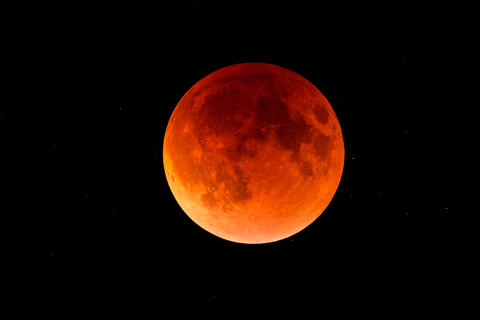Look up, UAE, the moon will shine bright with some red vibes! That’s right, the so-called Strawberry Supermoon will rise tomorrow (June 14) night, and it will be visible in the UAE.
Will the moon turn pink?
Despite its name, the celestial event won’t see the moon turn pink or red. The Strawberry Supermoon is “likely to appear in reddish or rose colour, mainly because it will rise above the horizon and get the colour of the rising sun”, Dubai-based Al Thuraya Astronomy Centre says on its website.
“June’s full moon is named after the wild strawberries that ripen this month and could be gathered by the Native American tribes.”
The Moon is at its brightest and largest ?
— NASA (@NASA) June 13, 2022
Watch the sky at 7:52am ET (11:52 UTC) on June 14 to gaze upon the Strawberry supermoon—when the Moon is both in its full phase and near perigee, or its closest point in orbit around Earth.
Read our Moon guide: https://t.co/K0xnkQwDMc pic.twitter.com/HfbIUAgprR
It has other native names, including Berries Ripen, Green Corn, and Hot Moon.
The honeymoon connection
Did you know that the celestial event may have a connection with the word ‘honeymoon’?
“The word ‘honeymoon’ traces back to at least the 1500s in Europe. The tradition of calling the first month of marriage the ‘honeymoon’ may be tied to this full moon because of the custom of marrying in June or because the ‘Honey Moon’ is the ‘sweetest’ Moon of the year,” an article on NASA's Deep Dive Planetary Website says.
How and when to watch?
The super bright moon will be visible in the UAE sky tomorrow, June 14. Just look up and go ‘wow’.
Al Thuraya is hosting a special paid event from 6.30pm to 8.30pm. It will feature a lecture, a question-and-answer session, a general observation of the celestial event and a detailed viewing through a telescope.
What’s a supermoon?
The astronomy centre defines a supermoon as a full moon that nearly “coincides with perigee” — the closest that the moon comes to the earth in its elliptic orbit. This results in a “slightly larger-than-usual apparent size of the lunar disk as viewed from Earth”.
This article has been adapted from its original source.









